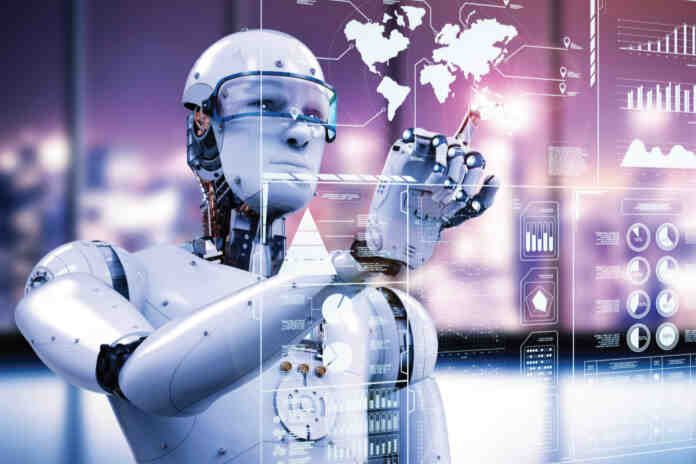The “father” of RoBee, the Italian humanoid robot created by Oversonic, speaks. The balance point has been found between the available experiences and a proprietary cognitive platform.
What is a robot if it is just a laboratory experiment? We asked ourselves this, in a somewhat rhetorical and provocative way, from the beginning of Oversonic’s entrepreneurial adventure, when we set ourselves the challenge of bringing “cognitivism” into the technologies that operate in everyday life, with the aim of impacting it concretely.
In the world of robotics, which has always cherished the dream of creating machines capable of emulating the characteristics of man, this leap in concreteness has not yet fully come true. However, it could be based on numerous experiences of systems that, in recent years, have been developed above all for industrial applications. The entrepreneurial and technological challenge started from an investigation of the available experiences.
It proceeded with a complex operation aimed at finding a point of balance between these and a proprietary cognitive platform. The result is RoBee, a cognitive humanoid robot, a machine that integrates a mix of technologies and mental abilities and is able to put it into play and translate it into practical and concrete actions with which it can carry out activities in the factory (currently the prevailing field of application), freeing the human operator from tasks, dangerous for physical and psychological health, that people no longer deserve to carry out.
A process that has just started but which has, in fact, brought a type of “experiments,” traditionally confined to research laboratories into everyday life. From the productive world, Oversonic’s perspective is to broaden its application to social services and, more generally, to social relations.
RoBee, The Reason For A Humanoid Robot
But why a humanoid robot? RoBee is up to 185 cm tall, weighing up to 120 kg (depending on the usage configuration); is equipped with over 30 joints, which allow the mobility of the limbs, and interchangeable gripping devices (end effectors ) to effectively perform various tasks, functional to relational activities (simple gestures such as pointing or counting) or the manipulation of objects. He navigates space on wheels rather than legs (less efficient in terms of energy consumption – on the other hand, man has relied on the spin since 3500 BC to make his mobility more efficient).
Still, with this exception, RoBee is a machine that fully replicates the structure of the human body. The reason is, first and foremost, practical: it is a robot designed to operate within environments created on a human scale, depending on its shapes and actions. Tables and chairs are designed to accommodate people sitting, many objects that we use in everyday life facilitate our handling skills with design, and the production lines of a factory are often built to size and at eye level.
RoBee, to deploy the cognitive abilities that allow it to operate in practical autonomy, must be able to integrate morphologically into the environment in which it is used without having to distort its architecture. But beyond this, there is a deeper motivation. The humanoid shape is a key to understanding, a passe-partout that opens a communication channel between the world of machines and the world of men.
There is a fundamental difference between the interaction with a humanoid machine and, for example, the one on the screen with a chatbot: you recognize the humanoid as something with which you inevitably have to have a relationship, even a social one, and above all as an interlocutor which is able to act in your world, moving glasses, laboratory objects in the (now almost ancient) space of the natural world and not just the virtual one. Our vision looks precisely at this: at a new society in which machines and people can coexist and collaborate safely.
Man And Technology, Two Parallel Tracks
In today’s society, we live with technologies, but not in a genuinely collaborative way. In the production world, in particular, with the 4.0 transition, we have achieved a high level of digitalization of factories, which allows us to collect a significant amount of data, with which we can make processes more efficient, make them progressively more automated, and improve productivity.
This progress, however, has often not taken into account the role of the human operator, who, in the worst cases, is relegated to the mechanism of a system in which artificial intelligence dictates the times, a bit like what happened to the Charlot worker in Modern Times.
Man and technology have evolved on two tracks that run parallel; they do not meet, they do not communicate, and often (even in the most technologically advanced factory environments) lead the person to “chase” the machine, to satisfy its needs, carrying out low-value jobs added, if not downright dangerous to health.
The Evolution Of Industry 5.0
The evolution that prefigures industry 5.0, a new paradigm that is declared human-centered, has instead the essential element in “cognitivism,” understood as the machine’s ability to acquire data from the outside and analyze it in a “critical” sense. An innovation that emancipates the condition of man’s subservience to the machine and allows the establishment between the two of a fully collaborative, equal relationship, as it allows human intelligence to recognize in artificial intelligence, not an analytical structure to be supported, but an autonomous interlocutor with whom to interact and to whom tasks can be delegated.
It is the overturning of a paradigm that has always characterized production systems and on which today we can concretely intervene, integrating technological innovation with new sensitivities and the new cultural dictate regarding sustainability. It is a path that has just begun, which leads to more technological humanity and more humanized machines: a dream that research has always pursued and which today, finally, we are ready to take out of the laboratories to make it an innovation at the service of well-being.
ALSO READ: Even Artificial Intelligence Has Dark Sides
